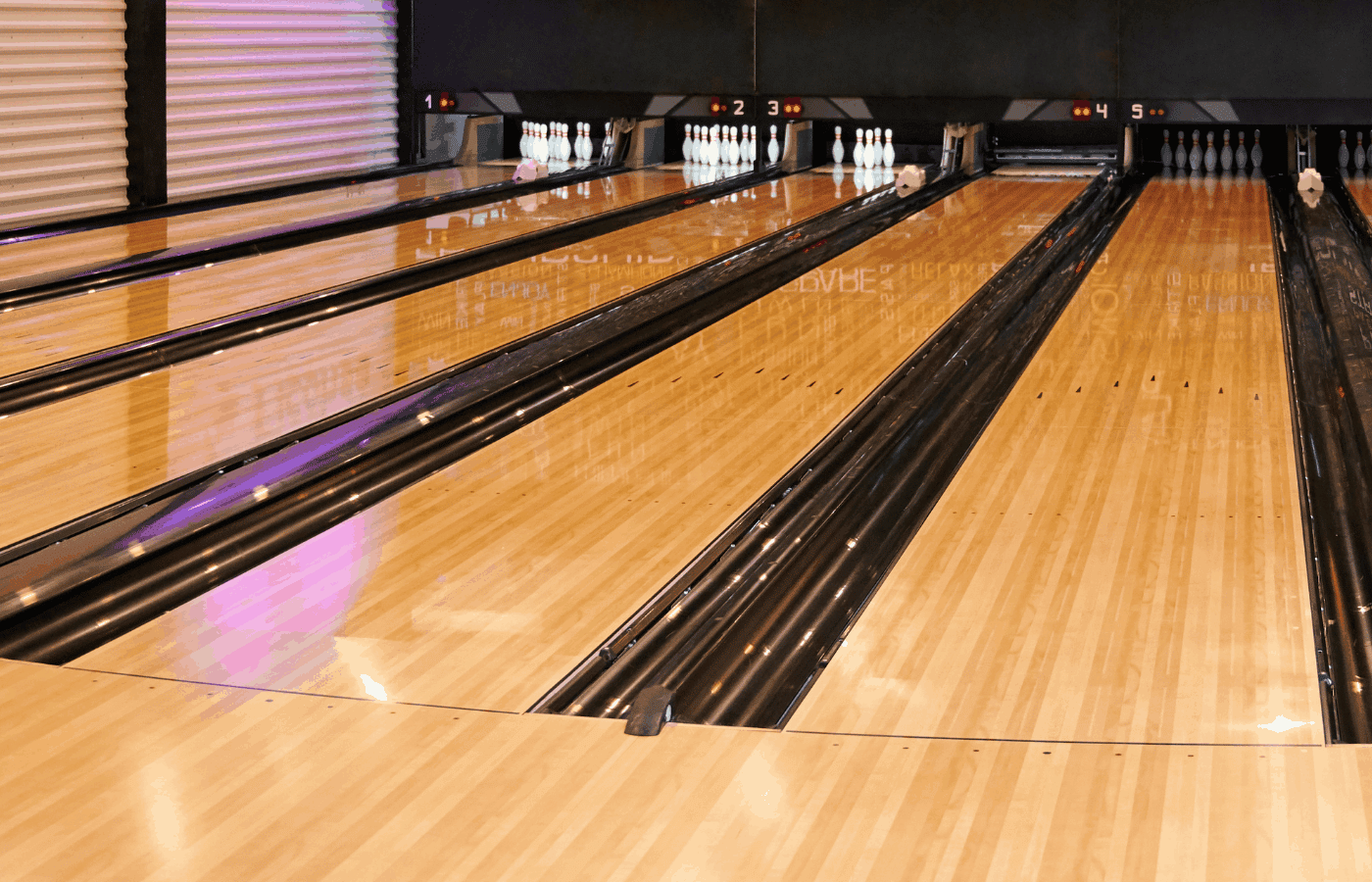Bowling alleys originally oiled the lanes to protect the wooden surface. However, nowadays lanes are oiled in order to affect the way that the ball rolls.
How the bowling lanes are oiled and way is not a question common to amateur bowlers. Instead, this deeper understanding of how the game works is reserved for more serious players, or simply those of us with a curious mind.
Oil on the bowling lanes serves both a practical as well as a functional purpose as its main purpose is to help the bowling ball roll smoothly down the lane but many players use this to their advantage in order to bowl a perfect score. Here we will tell you everything that you need to know about the uses of oil on bowling lanes, oil patterns and the frequency needed.
Why Do They Put Oil on Bowling Lanes?
There are two main reasons why they put oil on bowling lanes: to protect the lane and to allow for better play.
By oiling the bowling lanes they are protecting the wooden surface of the lane as the repeated action of throwing and rolling a bowling ball would cause dents and scratches on the lane over time. By oiling the lane the amount of friction between the ball and the lane is reduced.
The oil on the lane then acts as a protectant between the two surfaces and will actually absorb some of the impact, allowing the lane to stay in better condition for longer.
The other reason why bowling lanes are oiled is to help control the hook on the bowling ball. The coverstocks of modern bowling balls are made to cling to the bowling lane by creating a certain amount of friction.
Without the oil on the lane the bowling balls would cause a lot of friction as soon as they made contact with the lane, slowing them down and causing enough friction to impact the hook.
Did you know that most professional bowlers wipe down their bowling balls after each shot? Oil track is excess oil that is left on a bowling ball after a shot. When a lane is oiled too much, the amount of oil tracked on your bowling ball will greatly affect the way it rolls. Using a bowling ball wipe pad like this one after each shot can help keep excessive oil off of your bowling ball.
How Do You Know the Oil Pattern on a Bowling Lane?
There is not one specific oil pattern used on all bowling lanes. Instead, the oil pattern will differ from lane to lane and so if you want to bowl the best ball possible you will need to learn how to read them.
You will be able to see a layout of the oil pattern for a lane, but how do you read it? Well, one of the first things to look at is the distance. You should take the oil pattern distance and minus 31 from it. This will then give you a good idea of where you want your ball to be on the lane when it’s leaving the oil pattern.
Another thing to take into consideration is the actual amount of oil, not just its pattern. This will also have an effect on your ideal bowl. For example, if the load structure is wide then you will want to have your point of exit further to the right.
You will be able to see the volume of oil that has been applied to the lane (typically this is around 24 millilitres) but with some older bowling lanes, this may increase to around 28 millilitres as this will account for the age of the surface.
One last thing to consider when reading the oil pattern of a lane is the number of two to twos. This will allow you to calculate the angle that you want to throw toward the gutters as well as the friction that you will encounter.
How Often Do They Oil Bowling Lanes?
There is no set frequency at which bowling lanes need to be oiled. Instead, the frequency will depend on how much the lane has been used, the age of the surface as well as how dry the lane is acting.
All of these things will help you to understand whether or not the lane needs to be oiled. However, for the average bowling lane, the typical frequency of oiling is one to two times per day. This will ensure that the surface of the lane is not being damaged by the force from the bowling balls, reducing the number of scratches and imperfections in the wood.
However, if a lane has not been used since it was last oiled then there is no need to reoil it unless it appears particularly dry. Just as having a dry lane is bad for both equipment and player, so too is an overly oily bowling lane.
What Does the Oil Help Reduce in Bowling?
The main thing that oil helps to reduce in bowling is friction. The oil acts as a boundary between the ball and the lane, allowing the ball to slide and glide easily over the surface.
The reduction of friction will protect the bowling lane surface as it reduces the impact, permitting the ball to move rather than land in one spot. It will also allow the ball to roll, as otherwise, the significant friction would possibly stop the ball mid lane – certainly not an ideal situation.
Final Thoughts
Keeping a bowling alley lane properly oiled is very important. However, it is crucial that lanes are neither over nor under oiled as this will have a detrimental effect on the bowling conditions. The idea is to strike the right balance to ensure that the friction between ball and lane is just right.
On average, bowling lanes should be oiled twice per day, but this should be altered depending on its usage. For more experienced bowlers the amount of oil, and its spread, and can see on an oil pattern. This picture can then be read to inform the bowler of how best to throw, where to exit the oil pattern as well as how much hook they can expect.
So, not only does the oil protect the lane, benefiting the establishment, but it also benefits the player as long as they know how to correctly read the oil pattern of a particular lane that they are playing on.


